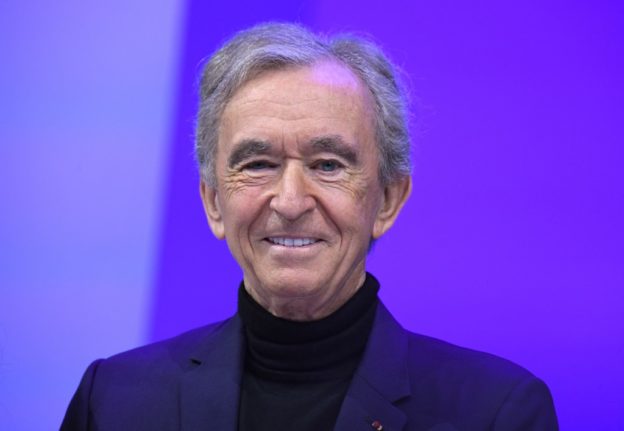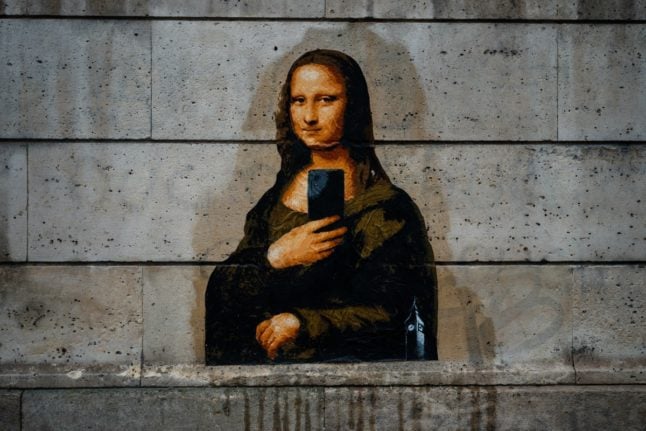With $184 billion on Thursday, the 73-year-old Frenchman and his family moved to the top of Forbes’ billionaire list, knocking the Tesla, SpaceX and Twitter boss off the top spot.
LVMH — the world’s leading luxury group — boasts more than 75 brands, acquired over time.
They include some of the most recognisable names in fashion and prestige goods, from Louis Vuitton and Kenzo to Moet Hennessy and Tiffany.
“An essential quality in our family is patience,” Arnault acknowledged in a 2012 TV profile of him.
A decade later — by which time LVMH’s annual sales had more than doubled to over 64 billion euros ($68 billion) — he told France’s Radio Classique:
“We can continue to progress — but let’s be patient.

“No rush,” he said.
The businessman has also invested in the French media, a move he described during a Senate hearing in January 2022 as “more on the patronage side”.
During a hearing in the French Senate earlier this year Arnault said he had intervened to stop LVMH advertising in the Liberation newspaper, after it irked him with a front-page article.
‘Invest in something promising’
Arnault was born in the northern French city of Roubaix on March 5, 1949 and joined his father’s public works building company at the age of 22.
He had just left the elite Ecole Polytechnique and convinced his father to transform the construction business into real-estate development instead.
In 1981, after socialist Francois Mitterrand was elected president, Arnault left France for the United States.
On his return three years later, he bought the debt-ridden textiles company Boussac, prevailing against several serious competitors with a promise to save jobs.
However, he embarked on a drastic reorganisation of the firm, only retaining some of its businesses, including the fashion house Christian Dior.
By then, Arnault was 35 years old.
“My father was surprised when I went to see him saying: ‘We’re going to redirect the family group and try to invest in something more promising, Christian Dior’,” the businessman recalled recently on Radio Classique.
It would be the foundation stone for his luxury empire.
LVMH was born out of the merger in 1987 of trunk-maker Louis Vuitton and the wines and spirits group Moet Hennessy.
Rivalry between the families owning the two companies aided Arnault’s ascendancy and he took control of the group in 1989 after no fewer than 17 legal proceedings.
“He’s a tough negotiator but unmatched, a visionary who knows how to surround himself with good people and who in the end always gets his way one way or another,” Arnaud Cadart, portfolio manager at financial services firm Flornoy, told AFP.
Arnault’s rise, however, has not been without some failures.

He lost Italian fashion and leather goods house Gucci to his French rival Francois Pinault, head of the PPR group, in 1999.
Arnault also tried in vain to take over Hermes, known for its silk scarves and leather handbags, by secretly building up a stake in the firm.
He rarely speaks publicly and does not like the limelight.
When the use of private jets by celebrities was being tracked on social media earlier this year, Arnault sold the LVMH jet.
“The upshot now is that no one else can know where I’m going because I lease planes,” he said on Radio Classique.
“It’s the French businessman’s lot to embody — sometimes in a totally unjustified way — the criticisms of the day since the mindset has for a few years now been a bit anti-corporate,” he lamented on France 2 in 2016.
That same year he was skewered in a satirical documentary entitled “Merci Patron!” (Thank you Boss!) by filmmaker and now politician Francois Ruffin, who often has Arnault in his crosshairs.
Obama, Putin, Trump, Macron…
Last year, LVMH paid a 10-million-euro fine to settle a case as part of a probe into spying.
Arnault abandoned his bid to secure Belgian nationality in 2013 issuing a mea culpa after it whipped up a storm of controversy which rumbled on for months amid public debate over the tax arrangements of the wealthy.
In 2011, he was received at the White House by president Barack Obama; Russian President Vladimir Putin welcomed him to Moscow five years later; former French president Francois Hollande cut the ribbon on his Louis Vuitton Foundation, while Donald Trump did the same for a Vuitton workshop in Texas.
And when the historic Samaritaine department store, owned by LVMH, reopened last year, French President Emmanuel Macron was a guest at the inauguration.
In Japan, China and the Middle East, the luxury mogul has access to top leaders.
Arnault has five children, all of whom work for LVMH, but shows little sign of slowing down — or handing over the reins just yet.
Every week he makes a point of touring all the group’s Paris-based companies.
At its last general meeting, the age limit for his role as LVMH chief executive was extended to 80 years old, ensuring the luxury conglomerate stays in family hands.
Married to a pianist and art lover, Arnault also created the Louis Vuitton Foundation, one of Paris’ most prestigious exhibition locations for contemporary art.




 Please whitelist us to continue reading.
Please whitelist us to continue reading.
Member comments